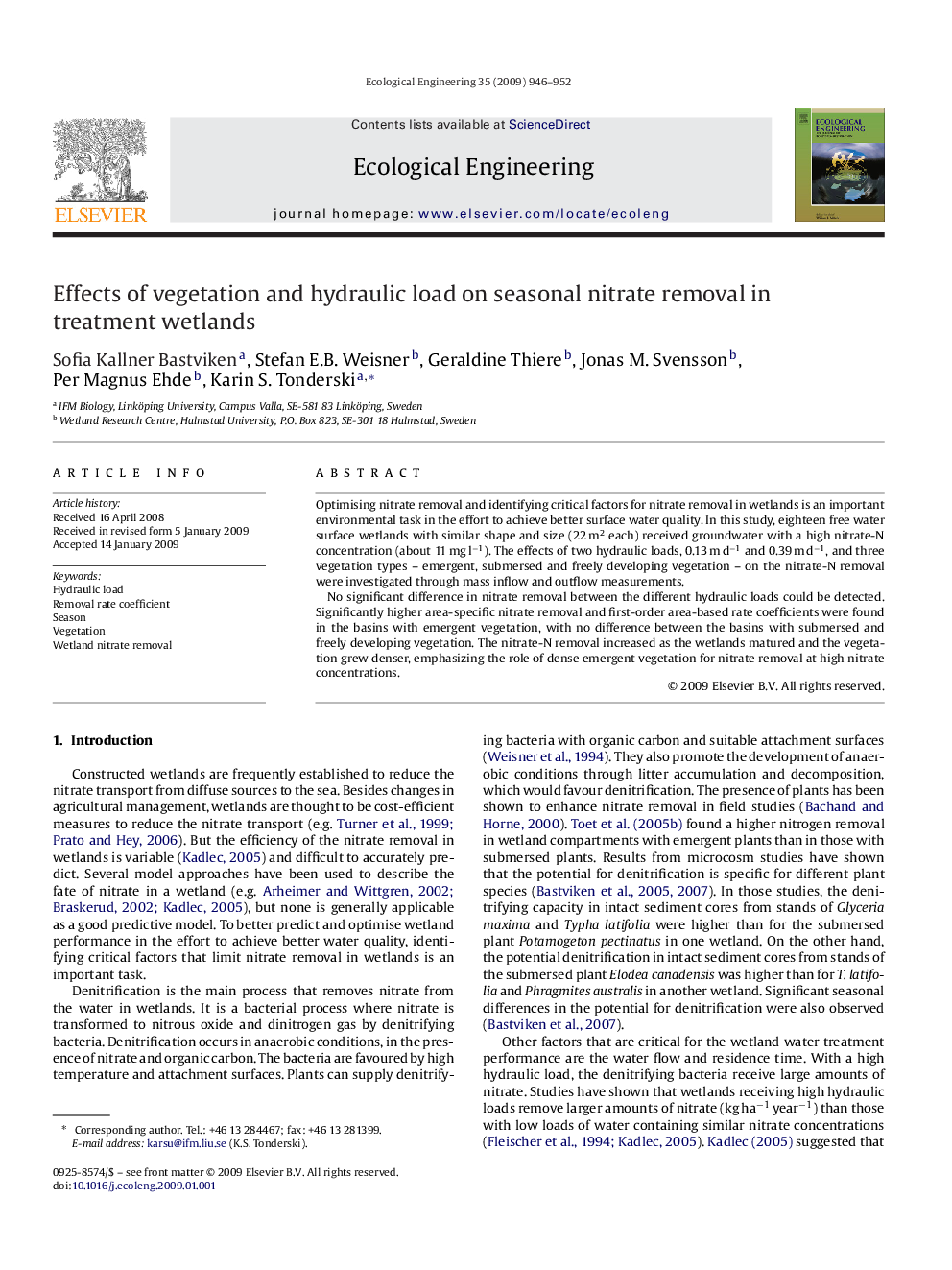| Article ID | Journal | Published Year | Pages | File Type |
|---|---|---|---|---|
| 4390967 | Ecological Engineering | 2009 | 7 Pages |
Optimising nitrate removal and identifying critical factors for nitrate removal in wetlands is an important environmental task in the effort to achieve better surface water quality. In this study, eighteen free water surface wetlands with similar shape and size (22 m2 each) received groundwater with a high nitrate-N concentration (about 11 mg l−1). The effects of two hydraulic loads, 0.13 m d−1 and 0.39 m d−1, and three vegetation types – emergent, submersed and freely developing vegetation – on the nitrate-N removal were investigated through mass inflow and outflow measurements.No significant difference in nitrate removal between the different hydraulic loads could be detected. Significantly higher area-specific nitrate removal and first-order area-based rate coefficients were found in the basins with emergent vegetation, with no difference between the basins with submersed and freely developing vegetation. The nitrate-N removal increased as the wetlands matured and the vegetation grew denser, emphasizing the role of dense emergent vegetation for nitrate removal at high nitrate concentrations.
